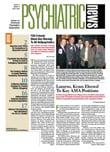One popular botanical compound is no more effective than placebo for treating symptoms of attention-deficit/hyperactivity disorder (ADHD) in children and adolescents, according to a report in the June 11 Journal of the American Medical Association.
Some parents have attempted to treat their children and adolescents with the herbal remedy because of the side effects associated with stimulant medications or because stimulants have not been effective in reducing the symptoms associated with ADHD in their offspring, stated the report.
Although there have been studies on the effects of St. John's wort on depressive symptoms in adults, adolescents, and children, according to first author Wendy Weber, N.D., Ph.D., there haven't been studies measuring the effects of St. John's wort on ADHD symptoms. Weber, who is a doctor of naturopathy, is a research associate professor at Bastyr University's Center for Natural Health in Seattle.
Hypericum perforatum, the scientific name for St. John's wort, has been found to inhibit the reuptake of serotonin, norepinephrine, and dopamine, Weber said. “When we set out to do the study, there were no data on the effects of this compound on ADHD symptoms, so we really didn't know what we would find,” she told Psychiatric News.
Since the nonstimulant selective norepinephrine reuptake inhibitor atomoxetine was approved in 2002 by the Food and Drug Administration for the treatment of ADHD, the authors decided to test the effects of Hypericum perforatum—which has a similar mechanism of action—on the symptoms of ADHD.
Weber and colleagues recruited 54 children and adolescents with ADHD from advertisements they placed in a Seattle-area parenting magazine, a co-op grocery store newsletter, and from Bastyr University publications and Web sites from March 2005 to August 2006. Subjects were aged 6 to 17 and were not receiving any ADHD-related treatments.
The subjects were randomized into two groups—one group received Hypericum perforatum, and the other received placebo. At baseline and every two weeks for the following eight weeks, Weber evaluated the subjects to see if there were changes in ADHD symptoms based on the ADHD Rating Scale-IV and the Clinical Global Impression Improvement scale (CGI). Participants and investigators were blinded to which subjects received placebo and which received the herbal compound.
Weber found that there was no significant difference between the two groups in the change in ADHD Rating Scale-IV scores from baseline to week 8: the total improvement in scores for the placebo group was 5.2 points, and in those receiving the herbal compound, it was 4.4 points.
In addition, there was no significant difference in CGI scores. Fourteen of 27 subjects in the placebo group and 12 of 27 in the Hypericum group were rated as much or very much improved.
In analyses assessing whether the herbal compound had any effect on behavioral problems as measured by the Child Behavior Checklist and Youth Self-Report Form, both groups had similar outcomes on selected scales.
The researchers also noted that those in the Hypericum group experienced neither more nor fewer adverse events—including nausea, rash, and headache—than did subjects in the placebo group, as measured by the Monitoring of Side Effects Scale.
Weber noted that study limitations included the small sample size and the fact that the agent tested in the study was not one of the newly marketed“ high-hyperforin” products that range from 3 percent to 5 percent hyperforin, the active ingredient in the herbal compound. In addition, the study results cannot be generalized to children and adolescents with ADHD and co-occurring conditions, she said.
In an accompanying editorial, Eugenia Chan, M.D., M.P.H., pointed out that“ limiting the indiscriminate use of costly or dangerous ineffective therapies—whether based in a conventional or unconventional medicine—should be a high priority for all clinicians.” She emphasized the importance of conducting similar randomized, placebo-controlled studies on other herbal remedies that advertisers often tout as “safe and effective.”
The study was supported by grants from the National Center for Complimentary and Alternative Medicine.
An abstract of “Hypericum Perforatum (St. John's Wort) for Attention-Deficit/Hyperactivity Disorder in Children and Adolescents: A Randomized Controlled Trial” is posted at<jama.ama-assn.org/cgi/content/abstract/299/22/2633>.▪
